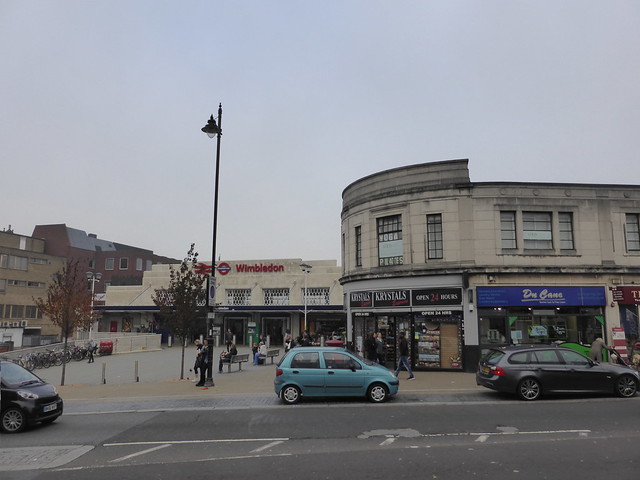TfL recently published a new document on south London rail devolution in response to a Government request. This blog examines what it says for South East and South Central London.
Rail devolution in south london
The new document provides a narrative and formal business case for devolution from the Department for Transport (DfT) to Transport for London (TfL). The headline benefit/cost ratio (BCR) is 4.3 : 1, which is high value for money, and difficult for DfT to argue with, however devolution is by no means certain, with the new Transport Secretary being more cautious on the topic than his predecessor.
The document focuses on a number of themes. It makes the case that long distance travelers will not lose out, something that will be key in making the plan happen. It argues that there is considerable scope for additional housing, currently held back through poor rail services. Fiscal neutrality is claimed, so the Treasury is no worse off. And wide stakeholder support is identifier, with many supporting letters.
All in all, considering TfL and the Mayor had just three and a half weeks to pull it together, it is pretty impressive. The most interesting part however is appendix 5, where the concept of "metro-isation" is examined.
Metro-isation of rail in south London
Due to history, the tube does not extend far into south London. This results in pressure on mainline rail, with an extensive network of tracks and stations. However, while the network is relatively dense, it is also tangled. Service patterns are complex and low frequency, often only two trains per hour 2tph. The key question is what would it take to increase frequencies to 6tph on most lines?
TfL identifies six points that need to be addressed:
- Predictable services
- Better connections
- More capacity
- Shorter journey times
- Reliability
- Better customer service
For details of each of these, see appendix 5 of the document.
The most interesting parts are where the current and potential service patterns are shown. These are of course speculative by TfL, requiring investment in new trains, signalling and turnbacks, but they give a good idea of the plan TfL has in mind. This is the concept for South Central London:
Click the diagram to enlarge it, and click here for the current service pattern.
The most significant would be an enhanced station at Streatham Common, with new platforms on the high-level tracks from Streatham to Sutton. This would provide the key interchange necessary to allow people to move across south London. Additional turnbacks would be needed at Belmont (for a healthcare campus), Wallington, Cheam and West Croydon, with two additional platforms likely at East Croydon through other planned work (a turnback is a location where trains can terminate and head back the way they came from).
This provides a summary of the key services:
- Balham to Victoria - from 14tph today to 18tph
- Streatham and Tulse Hill to Blackfriars - from 4tph today to 8tph
- Tulse Hill to London Bridge - stays at 8tph
- Crystal Palace, Gipsy Hill, West Norwood and Streatham Hill to Victoria - from 4tph today to 6tph
- Crystal Palace, Gipsy Hill and West Norwood to London Bridge - from 2tph today to 4tph
- Selhurst, Thornton Heath, Norbury and Streatham Common to Victoria - from 6tph today to 8tph
- Selhurst, Thornton Heath, Norbury and Streatham Common to London Bridge - from 2tph today to none
- Sutton to Streatham and Tulse Hill - from 4tph today to 8tph
- London Overground, from 4tph today to 6tph on each of the three routes in South Central
- Leatherhead and Epsom semi-fast services - unaffected
The key trade-off is the loss of direct services from Selhurst, Thornton Heath, Norbury and Streatham Common to London Bridge. Passengers get a more frequent service to Clapham Junction and Victoria instead, with the new Streatham Common interchange allowing passengers to change to reach London Bridge and Blackfriars.
Is it feasible? For the most part, it should be with new trains and signalling. However, Herne Hill will certainly be tight, with 8tph of Thameslink services crossing 13tph of South Eastern services on the flat. There will also be some slightly awkward timetables where 6tph services and 4tph services share the same tracks. In this respect, the 6tph frequency on the Crystal Palace and Streatham Hill to Victoria route looks odd, when 8tph would be easier to timetable.
In South East London, this is the concept:
Click the diagram to enlarge it, and click here for the current service pattern.
Again, there would need to be investment - extra tracks around Penge East to allow fast trains to overtake slower ones, Cannon Street, Lewisham and Dartford enhancements, plus better signalling.
The service pattern is not as neat as South Central in places, but that is probably because it has been developed more. It does provide a solid 6tph to the Greenwich, Bexleyheath and Sidcup lines. From Victoria to Orpington via Herne Hill would move to 6tph, and also 6tph Victoria to Lewisham via Peckham Rye.
Is it feasible? Well Cannon Street certainly sees a big increase in services, but far from impossible with the right investment. And off-peak it shows no trains from Sidcup to Dartford, which would need fixing. However, it looks like a fairly solid plan off-peak, and harder to judge in peak.
Summary
The document shows TfL are still pushing hard for rail devolution for South East and South Central London, and for good reason - there is the potential to make a big difference in service, driving growth and housing. The specific concept frequency maps are interesting, but obviously only outline at this point. Nevertheless, were they to come to pass, they would be a major improvement on current services.




